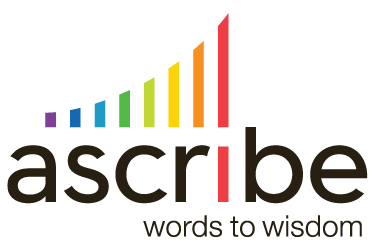The feedback you receive from customer surveys, market research studies, employee polls, and other sources can be generated from open ended and close ended questions. Both types have their benefits, but open ended questions excel in giving you deeper insight into the respondent’s thoughts.
What is the Difference Between Open Ended Questions and Closed Questions?
Closed questions have a predictable and specified set of responses. Typically the answers to these questions are either selecting from multiple choice or giving a yes/no reply. Open ended questions do not have set responses, and encourage respondents to give their thoughts and opinions in a freeform format.
Closed questions work best for basic demographic questions and simple inquiries that have a binary choice. You end up with quantitative data.
Open ended questions are excellent for diving deeper into why people respond the way they do. You’re able to explore a variety of topics and may encounter unexpected and unpredicted feedback. This is qualitative data.
The Benefits of Including Open Ended Questions on Your Surveys
Open ended questions allow you to start a conversation with your audience. You get a straight from the source look into the thoughts, emotions, values, interests, and other factors that influence their decisions.
These questions provide you with added information on your close ended questions, since it gives the respondent a space to elaborate. The potential for discovering completely new information about your audience opens up opportunities in many areas.
Use Cases for Open Ended Questions
There are many places where open ended questions are helpful. Here are a few of the most common use cases.
- Evaluating audience reception of new products and services
- Learning about the features that your audience wants to see in products and services
- Finding out more about your customer experience
- Gauging the satisfaction of your employees and customers
- Getting more detail from a client or vendor
- Having conversations with current and former customers
- Understanding your company’s brand awareness and reputation
Examples of Open Ended Questions and Sample Responses
Here are a few open ended questions and responses that you might see when you start using this option.
What parts of your experience did you like the most and the least?
This question allows you to find out about problems in your customer experience in general or specific touchpoints. You get to learn more about what you’re doing right and wrong, and gain more information about how your audience perceives your brand.
Some responses you may receive to this question include those that go into detail about their most recent or overall experiences, reviews of their last interaction, points of frustration, and where you’ve delighted the respondent.
What influenced your decision the most?
You’re learning more about the thought processes and emotions that are involved in the decision that you’re asking about. Some ways that you can use this question are learning more about a store visit, purchase, marketing plan, or employee interview.
The responses to this open ended question often involve walking you through the thought process at each step, elaborating on the areas that are most important when making decisions, and the problems they ran into that influenced them.
What improvements could be made in the workplace?
If you’re having problems with employee turnover, a lack of engagement, or other issues with your workforce, you can use this question to discover the biggest complaints.
The improvements could cover everything from needing the right technology to wanting more pay for the work that they’re doing. When you have happy, engaged employees, you see a benefit at all aspects of your organization, including with your customer experience. You may not be able to solve all of the problems overnight, but incrementally improving the workplace can lead to excellent results.
Where do you research product information?
You gain several benefits from asking this type of question. You get to learn about who the customer trusts to provide information about the products they want to purchase, find out how long it takes before the buyer gets in contact with you, and discover ways to position yourself as the trusted authority in your market segment.
The responses could range from a list of websites and publications to a full description of the steps they take when they’re researching and evaluating their choices.
What are your main concerns about your decision?
Why did you choose us over another company?
What challenges do you want to overcome in your life?
What are your interests?
What values are most important to you?
Younger demographics are focusing more on value-based decision making when they look at who they want to do business with, the types of products they purchase, and the companies that they want to work for. If you want to optimize your customer experience for this audience, then you’re going to need to know what values are driving their decisions.
The responses to this question will show you the values that are most important to your audience, and how they influence each decision made. For example, someone may feel strongly about animal welfare and seeks out cruelty-free products to purchase.
How to Analyze Your Open Ended Question Responses
You may have hundreds, thousands, or even millions of responses to your open ended questions. Since the respondents don’t have a uniform way of answering, they can come in many styles and formats. These responses are called verbatim comments, and your typical survey analytics tools won’t be able to work with this unstructured data. Manually sorting through all of the surveys with open ended responses can be prohibitively resource intensive. Thankfully, there’s a software category that can help.
Text analytics tools use Natural Language Processing technology to work with this information and provide you with actionable insights. When you deal with large data sets of verbatim comments, using this type of solution automates significant portions of the process for cost-effective analysis.
